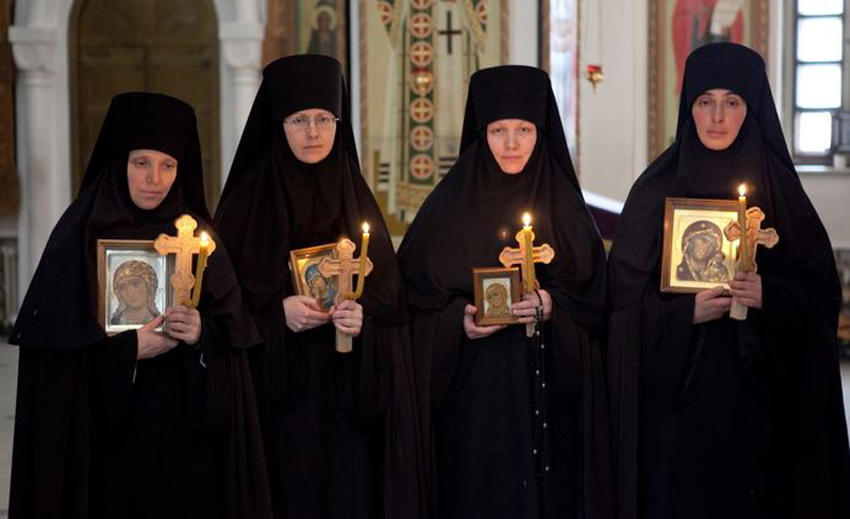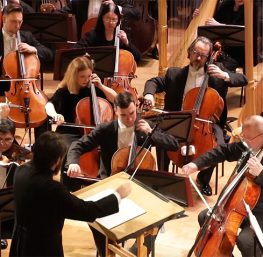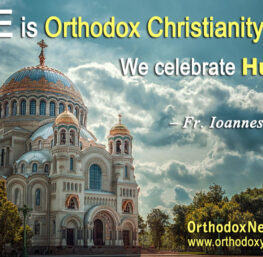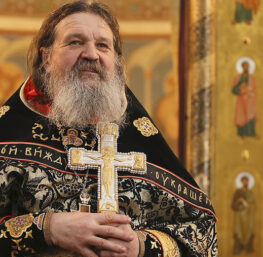 by Fr. Gabriel Rochelle –
by Fr. Gabriel Rochelle –
The beauty of holiness is in the face of a nun. Beauty untouched by any artificial, chemical, or cosmetic means can stun you, especially if costuming prevents you from viewing the rest of the body. When you are limited to the face you see with an intensity that eludes you if there is more to observe. It’s like being deprived of one of your senses, which accentuates and heightens and sensitizes the remaining senses. If you see a figure robed in black except for the oval of her face you see more than were she clothed in is called normal attire.
The beauty of holiness is evident in all ages. Age has not only its privilege but also its unique beauty. This is also true, then: the holiness of beauty may be seen in the face of a nun – and it is ageless.
Men have a particular appeal when they are robed in black, as well, but my most recent companions have been nuns and not monks.
This is not sexual curiosity; rather, an open intimacy draws you into the other’s world and allows you to speak freely and confidentially, and makes you feel as if only the two of you exist in this moment. This must be the reason why it feels natural and right and easy to engage in spiritual conversation with monastics. The accoutrements of ordinary life are swept away; that’s the gentle power of the habit she wears.
Orthodox monasticism is singular. Monks and nuns are not in orders as in western Catholicism or Anglicanism, with distinct garb pertaining to their order. Nuns and monks have no qualifying adjective like Carmelite or Benedictine. And they all wear the same black garb worldwide.
What purpose do these people serve? Many of us see them as useless and outmoded in the digital age. Not so. Bishop Alexander Golitzin, a contemporary Orthodox leader, reminds us that monks and nuns are scandalous, charismatic, and prophetic.
The nun is scandalous because she points toward a future not yet unfolded into the present; namely, the future of God. With no morbid touch, this unfolding future is what death holds: the promise of release from the cares of life, the promise of eternal rest –but in this life. The nun anticipates that end by shunning the material trappings and possessions that bog most of us down.
The nun is charismatic because she lives in the light of those gifts the Spirit promises to the faithful: love, joy, peace, patience, and wisdom. Beholden to none, she can be present and free for all. Her spirit is captive to no agenda, time, place, or conflicting commitments.
The nun is prophetic because she is a spokesman for God in her attitude, her demeanor, her thoughts, and her activities. The prophet is not an oracle or a fortuneteller. The prophet proposes by his or her speech, thought, and deeds that alternative spiritual path that leads to and proceeds from God.
Most of us don’t get it. These people pass by unnoticed or possibly as an irritant or challenge. In the old countries, however, they are sought out for counsel and companionship because people know the secret characteristics they show forth. They are sought because people know the beauty of holiness resides in their faces even as the holiness of beauty resides in their person.
American monasticism took root. It is growing: half a century ago you would be hard-pressed to find a monastery. Today they are everywhere even if small, and they have begun to be a magnet not only for Orthodox Christians but also for many who seek honesty of spirit, natural humanity, and the beauty of holiness.
—————————————————
HT: Pravmir. (Minor organizational edits and bolding of key phrases done by blog editors done to enhance readability.)





The nuns in the photo are exquisite. If you look closely, you see a light emanating from within which draws you closer.
There are many out there who have been given titles as most beautiful or something similar. Get near many of them and you can feel a coldness, along with that voice in your head that tells you to run.
The beauty of these nuns can not be bought. Just as a beautiful waterfall in nature produces glorious rainbows in the sun, they have that beauty.
Thank you for this spiritually touching and informative article. I would only add that we must open and cleanse our eyes to see holiness in the Light of Christ which emanates from all of God’s children. He did not “leave us as orphans” (John 14:18). Holiness is not only found in our treasured Orthodox monasteries and in the faces of the monastics – it is found in the face of the suffering, the imprisoned, those homeless and hungry. Holiness is also not limited to the suffering and the ascetic. Holiness is not rationed – but the calling of each disciple of Christ. We are all called to be a man and woman of God – inside and outside the monasteries. The greatest treasures are many times buried and hidden. Holiness is the surrender and hunger to draw near to our Lord and have intimacy with Him. We do not need to cover a woman’s body to focus on the holiness of her face (though for the monastics this is integral to their faith walk) – if we have eyes to see – we will see the Light of God regardless of the physical appearance of anyone – despite the physical appearance of anyone – regardless of physical beauty by conventional standards. Nor should we assume that physical beauty is contradictory to inner beauty. We do not need the “outer” to move us to see the “inner.” Blessed are those who see God’s Light in all who love and follow Him. Monasticism is a special calling to work our salvation. We are all called to work our salvation only in different ways. God knows our heart – and it is our heart that He wants. What Orthodox Christians need to learn and understand is that Jesus is our Beloved – our first and truest Beloved – inside or outside the monastic life and calling.